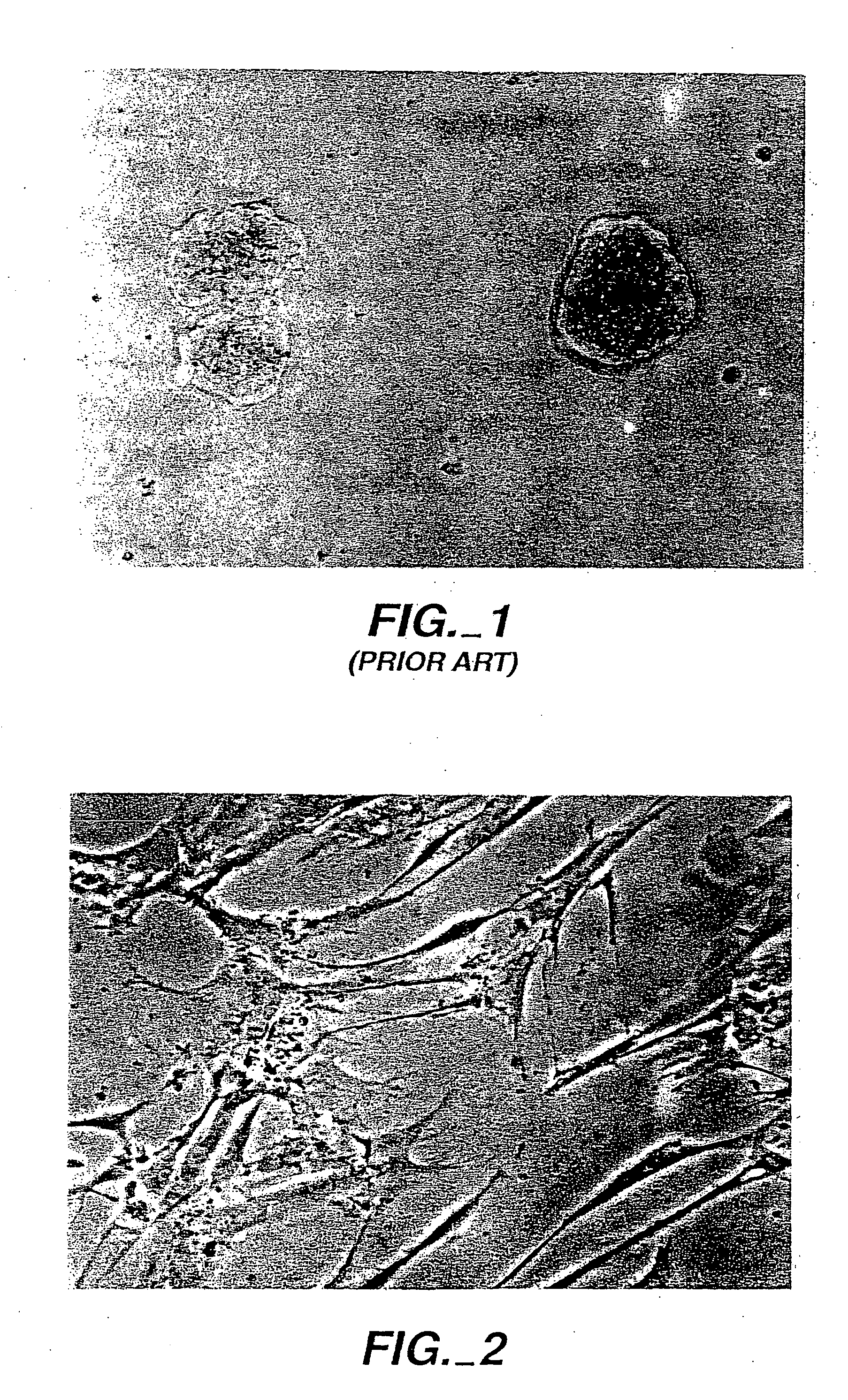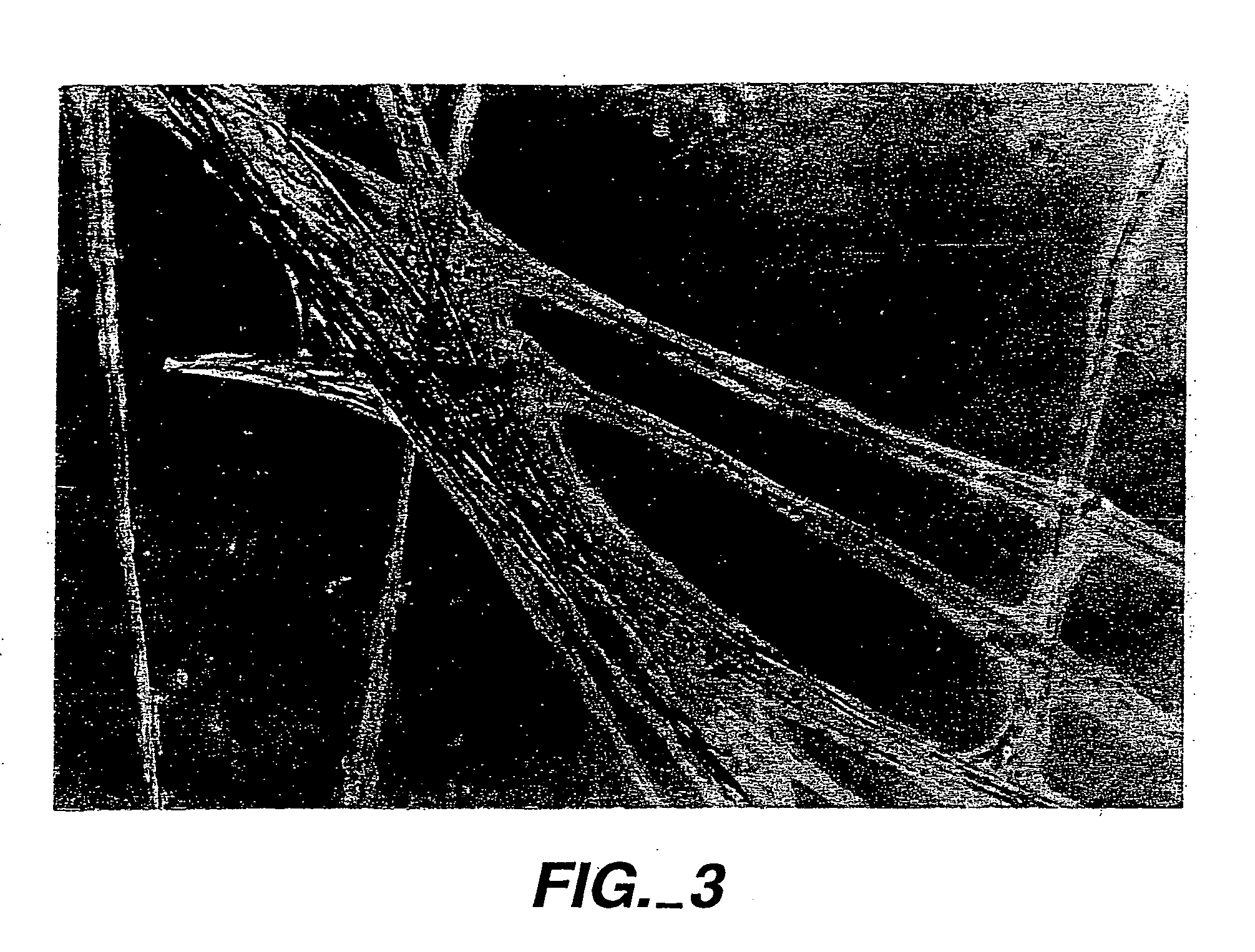Synthetic compounds and compositions with enhanced cell binding
- Summary
- Abstract
- Description
- Claims
- Application Information
AI Technical Summary
Benefits of technology
Problems solved by technology
Method used
Image
Examples
example 1
[0053] The peptide Gly-Thr-Pro-Gly-Pro-Gln-Gly-Ile-Ala-Gly-Gln-Arg-Gly-Val-Val (SEQ ID NO:1) of the present invention was synthesized by solid phase procedures using symmetrical anhydrides for coupling of Boc-amino acids, except for Q residues that were coupled with 1-hydroxybenzyl triazole. Circular dichroism and 1H and 13C NMR studies suggest that the peptide exists in a random conformation in aqueous solutions and has little tendency to generate collagen or polyproline-like conformations in solution in the presence of helicogenic solvents, but shows a tendency to form a β-strand structure in decreasingly polar solvents.
[0054] All media and supplies for tissue culture were obtained from University of California San Francisco Tissue Culture Facility. Cycloheximide was purchased from Sigma Biochemicals, St. Louis, Mo. Rat tail tendon collagen was purified to homogeneity and characterized in our laboratory using published methods. Tissue culture dishes (35 mm diameter, Falcon Plasti...
example 2
[0060] Collagen related, but non-inventive peptides, (Pro-Pro-Gly)10 and (Pro-Hyp-Gly)10 (wherein Hyp is hydroxy-proline), were obtained from Peninsula Laboratory, Belmont, Calif. Polyproline was purchased from Sigma Biochemicals, St. Louis, Mo. Dynorphin 1-13 and human preangiotensinogen 1-14 were purchased from Bachem, Torrance, Calif. Three different fibronectin related peptide sequences were also obtained from Bachem and were-used without further analysis.
[0061] The inventive peptide (SEQ ID NO:1) was synthesized as described in Example 1 and the same procedures and conditions of Example 1 were used herein.
[0062] In this experiment to examine the effect of various additives on binding, the additives were added in the medium containing the cells before being transferred to the dishes for the binding assay. It was observed that cell binding to collagen proceeds rapidly in the beginning of the experiment but then slows down after approximately 30 minutes and approximately 70-80% ...
example 4
[0075] Particulate hydroxylapatite was obtained from CeraMed Corporation of Lakewood, Colo. under the designation “osteograph.” Particles were coated by preparing a 100 μg / ml solution of inventive peptide (SEQ ID NO:1) in PBS into which 10 μg of the hydroxylapatite product was dispersed and allowed to sit overnight. The thus coated particles were then incorporated into an agarose gel that either had (a) inventive peptide therein (as described for the FIG. 2 photograph) or had (b) no inventive peptide (as described for the FIG. 1 photograph). Fibroblasts were placed on the surfaces of these gels. Where the particles were coated but the gel did not include inventive peptide (inventive composition (b)), then the cells migrated into the gel to the particles and formed spreading colonies which tended to clump. Where the *coated particles were in a gel that also included inventive peptide (inventive composition (a)), there was a very large influx of cells into the gel that organized on an...
PUM
 Login to View More
Login to View More Abstract
Description
Claims
Application Information
 Login to View More
Login to View More - R&D
- Intellectual Property
- Life Sciences
- Materials
- Tech Scout
- Unparalleled Data Quality
- Higher Quality Content
- 60% Fewer Hallucinations
Browse by: Latest US Patents, China's latest patents, Technical Efficacy Thesaurus, Application Domain, Technology Topic, Popular Technical Reports.
© 2025 PatSnap. All rights reserved.Legal|Privacy policy|Modern Slavery Act Transparency Statement|Sitemap|About US| Contact US: help@patsnap.com


